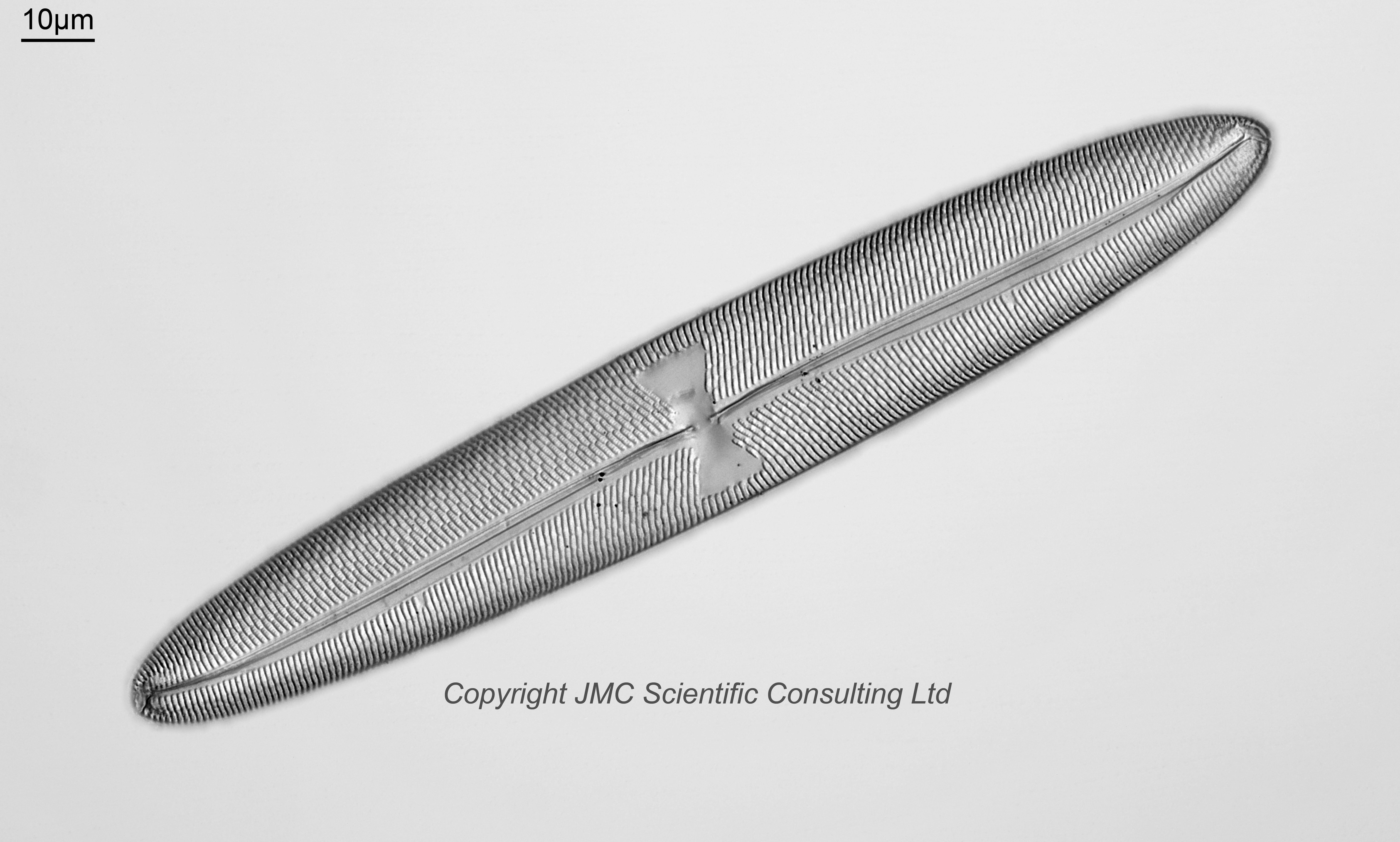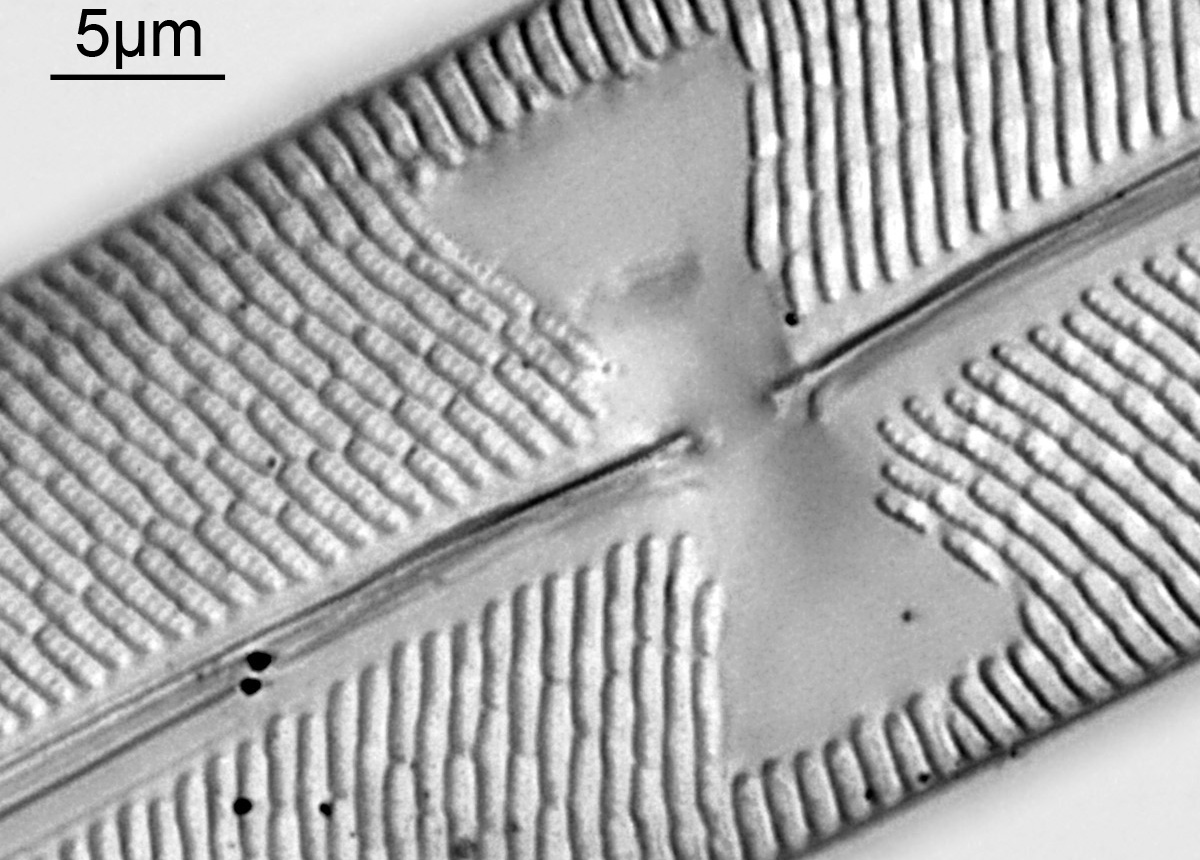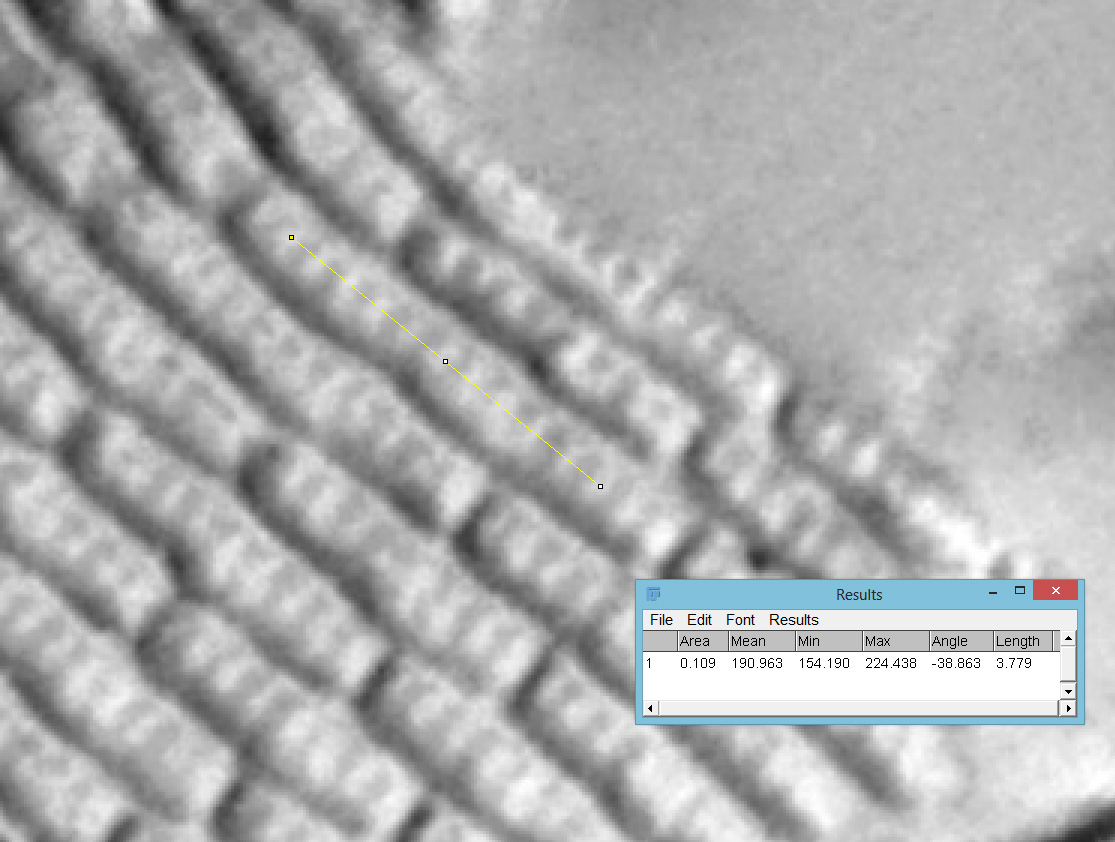




An arrangement of Stauroneis pulchella. This name is currently regarded as a synonym of Trachyneis aspera (Ehrenberg) Cleve and/or Trachyneis aspera var. pulchella (W.Smith) Cleve 1894. Prepared by Watson and Sons Ltd. Olympus BHB microscope using 450nm LED light. 63x Leitz Pl Apo 1.4 objective, oil immersion. Olympus Aplanat Achromat condenser, oil immersion, oblique lighting. 2.5x Nikon CF PL photoeyepiece. Monochrome converted Nikon d850 camera. 37 images stacked in Zerene (Pmax).
This slide was relatively low contrast, and although the mountant isn’t mentioned I suspect it is Styrax. To help with the contrast I used oblique lighting, and this has brought out some of the features. In the main image with the 63xL objective, the structure of the diatom has also demonstrated how oblique lighting works. The lighting direction is from the top left to the bottom right of the image. In the cropped image, the linoelae in the striae in the top left and bottom right of the diatom are visible. This is because those linoelae are orientated perpendicular to the direction of the oblique light. The linoelae in the striae in the bottom left and top right part of the diatom are not visible, as they are now parallel to the direction of the light. The direction of the oblique light in relation to the features of the diatom you want to emphasize is an important consideration when using it. In ImageJ I measured the lineolae spacing and got 378nm (based on an average of 10).